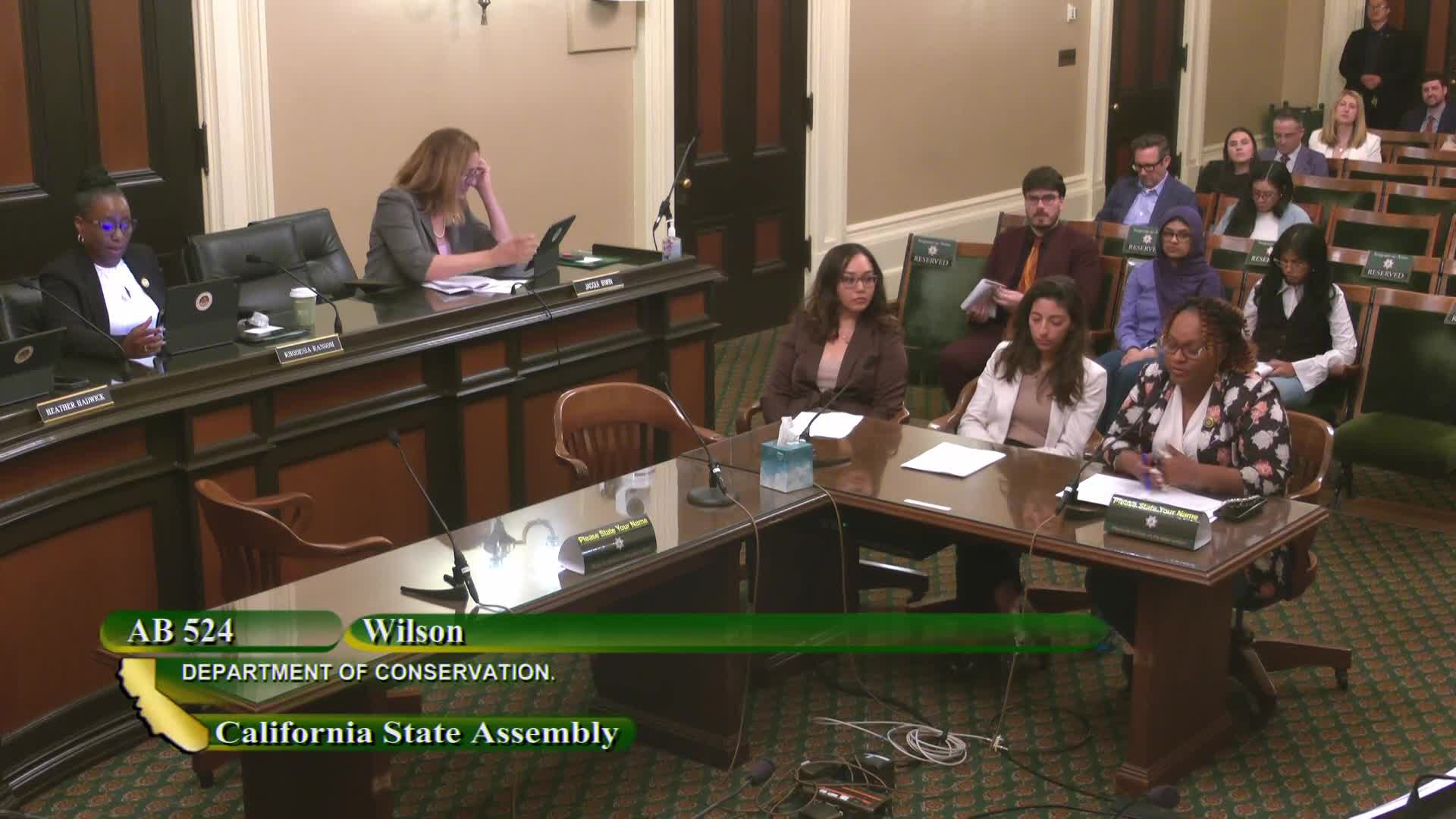California Assembly passes AB 675 to secure Farm to School program funding
April 30, 2025 | California State Assembly, House, Legislative, California
This article was created by AI summarizing key points discussed. AI makes mistakes, so for full details and context, please refer to the video of the full meeting. Please report any errors so we can fix them. Report an error »

In a pivotal meeting held at the California State Assembly, the Assembly Agriculture Committee gathered to discuss significant legislative measures aimed at enhancing the state's agricultural landscape and supporting local communities. The atmosphere was charged with purpose as members reviewed Assembly Bill 675, a proposal designed to secure the future of California's Farm to School program.
Assemblymember Agria Curry passionately presented the bill, emphasizing its role in connecting students with healthy, locally sourced food while providing essential education in agriculture and nutrition. "This program reaches nearly half of California students, particularly in high-need communities," she stated, highlighting its importance in ensuring that children receive the nutrition necessary for academic success. The bill aims to codify the program into state law, providing stability and certainty for both farmers and school districts that currently rely on annual budget allocations.
The committee heard from various stakeholders, including representatives from the Center for Ecoliteracy and the Community Alliance with Family Farmers. They echoed the sentiment that the Farm to School program not only benefits students but also supports local economies by creating stable markets for small farmers. "Every dollar invested in farm to school generates between $1.03 to $2.40 of economic activity," noted Abby Halperin from the Center for Ecoliteracy, underscoring the program's far-reaching impact.
As the discussion progressed, the committee members voted unanimously in favor of the bill, signaling strong bipartisan support for initiatives that address food security and agricultural sustainability. The approval of AB 675 marks a significant step toward reinforcing California's commitment to fostering healthy eating habits among students while simultaneously supporting local farmers.
With the passage of this bill, California aims to lead the way in establishing a resilient food system that benefits students, farmers, and the broader community. As the meeting concluded, the sense of accomplishment was palpable, leaving attendees hopeful for the future of agricultural education and local food sourcing in the state.
Assemblymember Agria Curry passionately presented the bill, emphasizing its role in connecting students with healthy, locally sourced food while providing essential education in agriculture and nutrition. "This program reaches nearly half of California students, particularly in high-need communities," she stated, highlighting its importance in ensuring that children receive the nutrition necessary for academic success. The bill aims to codify the program into state law, providing stability and certainty for both farmers and school districts that currently rely on annual budget allocations.
The committee heard from various stakeholders, including representatives from the Center for Ecoliteracy and the Community Alliance with Family Farmers. They echoed the sentiment that the Farm to School program not only benefits students but also supports local economies by creating stable markets for small farmers. "Every dollar invested in farm to school generates between $1.03 to $2.40 of economic activity," noted Abby Halperin from the Center for Ecoliteracy, underscoring the program's far-reaching impact.
As the discussion progressed, the committee members voted unanimously in favor of the bill, signaling strong bipartisan support for initiatives that address food security and agricultural sustainability. The approval of AB 675 marks a significant step toward reinforcing California's commitment to fostering healthy eating habits among students while simultaneously supporting local farmers.
With the passage of this bill, California aims to lead the way in establishing a resilient food system that benefits students, farmers, and the broader community. As the meeting concluded, the sense of accomplishment was palpable, leaving attendees hopeful for the future of agricultural education and local food sourcing in the state.
View full meeting
This article is based on a recent meeting—watch the full video and explore the complete transcript for deeper insights into the discussion.
View full meeting
